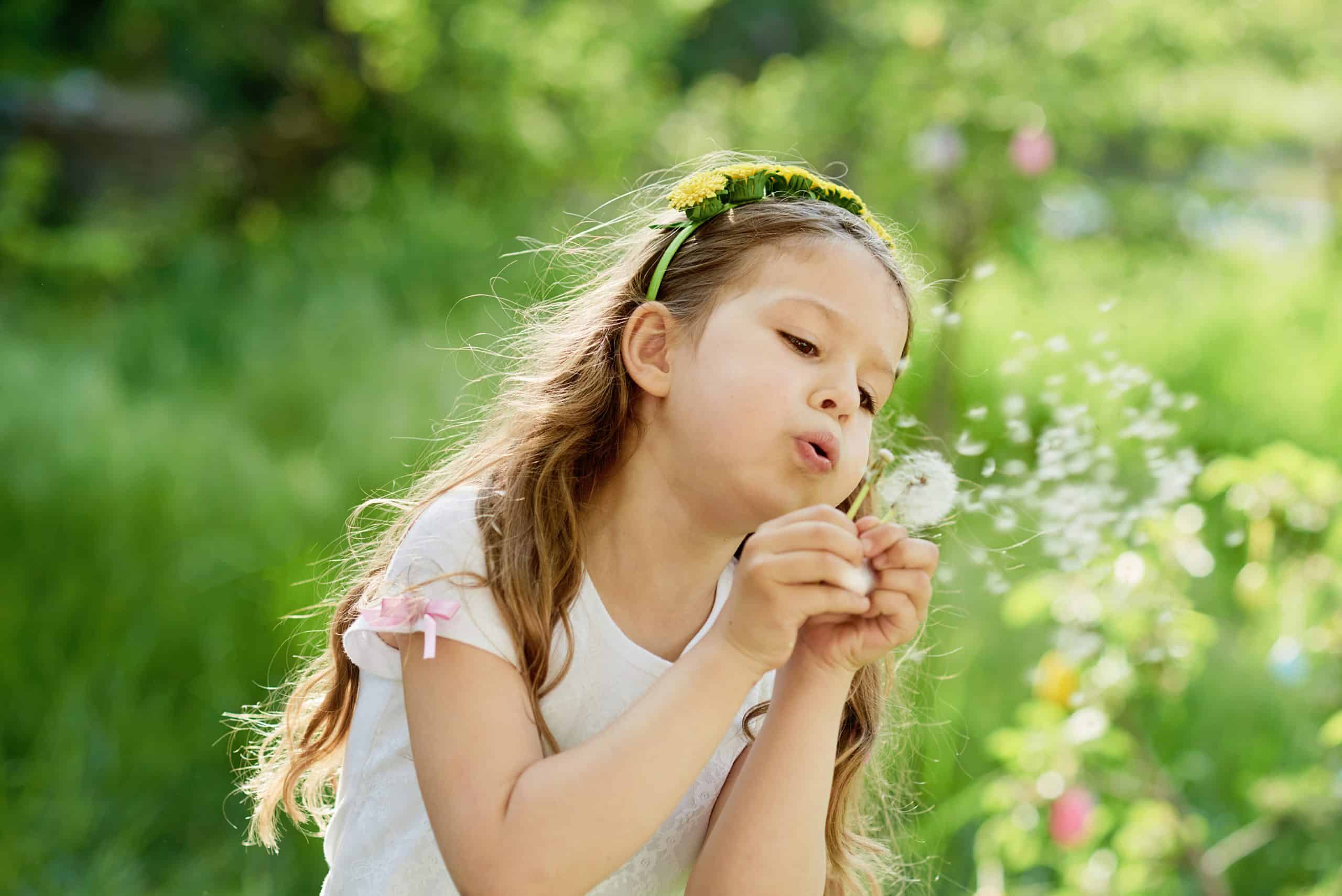Spring’s arrival in the United Kingdom is a spectacle to behold, with gardens bursting into a riot of colours. But for some, this season of rebirth brings forth an unwanted companion — seasonal allergies. Blooming flowers, grass, trees and other plants release pollen into the air, triggering symptoms like sneezing, a runny nose, and itchy eyes in those with hay fever or asthma. However, there’s no need to abandon your love for gardening due to allergies. With careful planning and selection, you can create an allergy-friendly garden and enjoy the outdoor space without the fear of sneezes or wheezes. Read on to learn how to best mitigate the effects of pollen and create a low-allergy garden.
Choosing Allergy-Friendly Plants
As you begin to plan your garden, the first step to reduce allergens is to choose plants that are less likely to cause an allergic reaction. Typically, plants that are pollinated by insects, like butterflies and bees, are less likely to cause allergies as they have larger, heavier pollen that doesn’t become airborne easily. These include many flowering plants, herbs and vegetables.
Cela peut vous intéresser : What Are the Best Practices for Cybersecurity in UK’s Smart Cities?
Despite their beauty, some plants are notorious for causing allergies due to their high pollen count. Certain trees like Oak, Pine, and Birch should be avoided if you are sensitive to pollen. Instead, consider trees like Magnolia, Pear, or Apple, which have a lower pollen count. In the case of grass, opt for varieties like Buffalo grass, St. Augustine grass or Velvet grass which produce less pollen compared to other species.
Plants with bright, showy flowers are often a safer choice as they lure insects for pollination, keeping pollen out of the air. Some examples of such allergy-friendly plants are Roses, Geraniums, and Snapdragons. Fruit trees and berry bushes are also good choices due to their female plants that do not produce pollen.
Avez-vous vu cela : How Can Circular Economy Principles Reduce Waste in UK’s Fashion Industry?
Favouring Female Plants
An interesting aspect of creating an allergy-friendly garden is the preference for female plants. In many species of trees, there are separate male and female plants. Male plants produce pollen, while female plants capture the pollen to produce fruit or seeds. Therefore, if you include more female plants in your garden, they will help in reducing the overall pollen count.
Several popular trees and shrubs, including Holly, Yew, and Poplar, come in male and female varieties. When buying these types of plants, ask for the female varieties. They might require a bit more maintenance due to the fruit they produce, but the reduction in pollen can make a significant difference to those suffering from allergies.
Implementing Best Gardening Practices
Proper garden maintenance can also contribute towards minimizing allergens. Mowing your lawn regularly before the grass gets a chance to flower and release pollen is an effective strategy. However, if you’re sensitive to grass pollen, you might want to consider artificial grass or a lawn-free garden design.
Pruning and trimming your trees and shrubs regularly can also help control pollen levels. This is especially important for trees that have both male and female flowers, as pruning can help control the number of male flowers and hence the amount of pollen.
Watering your garden in the evening can help settle the day’s pollen, reducing the amount in the air the following day. Using a mulch or ground cover around plants can also help keep the soil moist and prevent pollen from becoming airborne.
Creating Pollen-Free Outdoor Spaces
While it’s impossible to create a completely pollen-free garden, you can create zones where exposure to pollen is minimal. This can be done by strategically placing seating areas away from plants that are known allergen producers. Consider incorporating patios, pergolas, or gazebos in your garden design, and enhance these spaces with hypoallergenic plants.
Choosing the right garden furniture can also help. Metal or plastic furniture is preferable to wooden or wicker furniture, which can trap pollen. Similarly, outdoor cushions should be made from synthetic materials that are less likely to hold onto pollen compared to cotton or other natural fibers.
Considering the Timing of Pollen Release
Understanding when plants release their pollen can also help in planning your garden. Many trees release their pollen early in spring, while grasses release pollen later in the spring and in early summer. By choosing plants that flower at different times of the year, you can help to spread out the pollen load, making your garden more enjoyable throughout the year.
In conclusion, while it’s challenging to create a completely allergy-free garden, it’s entirely possible to significantly reduce allergens and make your garden a respite rather than a source of discomfort. By mindful plant selection, favouring female plants, good gardening practices, creating pollen-free zones, and considering the timing of pollen release, you can enjoy your summer outdoors with fewer allergy symptoms.
Opting for Allergy-Friendly Gardening Tools
In addition to selecting the right plants, the tools you use in your garden can also play a role in your allergy management. Certain gardening tools can stir up dust and pollen, causing an increase in allergy symptoms. Therefore, it is crucial to choose low-allergen tools to assist in your gardening activities.
Make use of gardening gloves and tools with long handles to minimise direct contact with plants and soil. This can help you avoid skin irritations and reduce the need to lean into the plants, which can trigger allergies. Also, consider wearing a mask while working to prevent inhaling dust and pollen, especially during the pollen season.
Choose tools made from materials that do not harbour pollen or mould. Materials such as stainless steel are a good choice as they are easy to clean and less likely to trap irritants.
When using a lawn mower, opt for models with a grass collection box. This feature collects the grass cuttings, preventing them from being dispersed into the air and causing a reaction in hay fever sufferers. If possible, consider investing in a robotic mower which can maintain your lawn without your presence, thus reducing your exposure to grass pollen.
The storage of your gardening tools should also be considered. Keep them in a dry, clean place to avoid the growth of mould, a common allergen. Additionally, clean your tools regularly to remove any accumulated pollen.
Understanding the Benefits of an Allergy-Free Garden
Developing an allergy-friendly garden not only benefits allergy sufferers, but it also promotes a healthier outdoor space for everyone. By reducing the pollen count in your garden, you are creating an environment that is more comfortable and enjoyable for all, especially during the warmer months.
An allergy-free garden can also contribute to the overall biodiversity of your local area. By choosing insect-pollinated plants, you are providing food and habitat for local wildlife, including bees, butterflies, and birds. This can help to enhance the natural ecosystem and promote a more balanced and sustainable environment.
Furthermore, the practices used in creating an allergy-friendly garden can also help improve the overall health and appearance of your garden. Regular pruning and watering, for example, can keep your plants in optimal condition, making your garden more aesthetically pleasing.
Lastly, an allergy-free garden can help reduce dependency on allergy medications for some people. By limiting exposure to allergens in your own garden, you may be able to manage your symptoms more naturally and with fewer medications.
Conclusion
While the dream of an entirely allergy-free garden might still be out of reach, it’s certainly possible to have a garden that significantly lessens the severity of allergy symptoms. By incorporating the aforementioned strategies, including careful plant selection, favouring female trees, effective use of allergy-friendly gardening tools, and creating pollen-free zones in your outdoor space, your garden can become a haven rather than a source of discomfort.
Remember, the aim isn’t to banish every single allergen but to create a balance that lets you enjoy your garden as much as possible. After all, a garden is meant to be a source of joy and serenity, and with a bit of planning, allergy sufferers too can experience this joy. It’s time to grab your gardening tools and start planning your allergy-friendly garden, ensuring a sneeze-free, comfortable pollen season for all.






